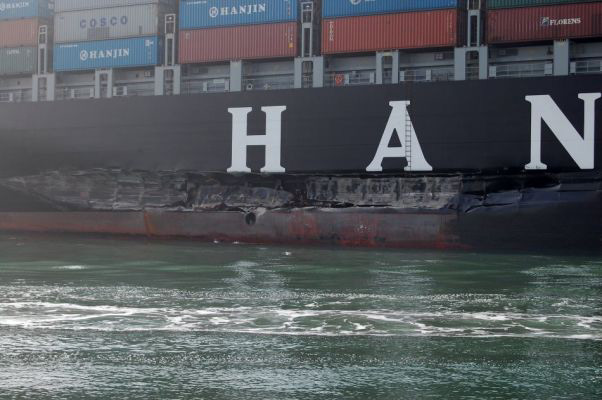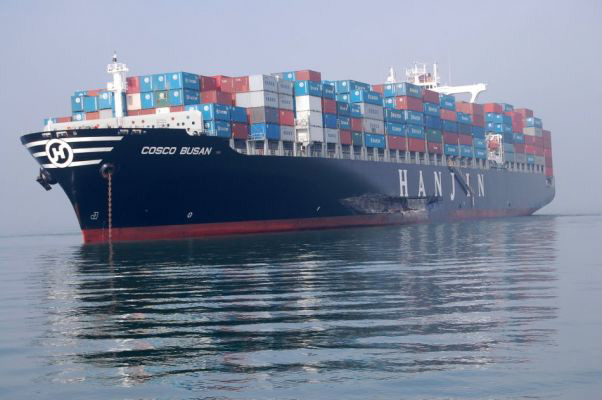Tasman Pioneer judgment may set liability precedent
by Robert Gay – Lloyds List Wednesday 3 June 2009
ARTICLE IV rule 2(a) of the Hague-Visby Rules protects a carrier in respect of loss or damage arising or resulting from “act, neglect or default of the master, mariner, pilot, or the servants of the carrier in the navigation or in the management of the ship”.
Does this mean that the carrier is protected in respect of the consequences of any action (however extreme it may be) which may be taken by the master, to the extent that it affects the navigation or management of the vessel?
There are already two lines of authority in English law that indicate that the protection given to the carrier is not so complete. The Tasman Pioneer may add a third line.
Tasman Pioneer was making a voyage from Yokohama in Japan to Pusan in South Korea by way of the Japan Inland Sea. In order to enter the Inland Sea, the normal route would be outside (to the west) of a small island off the southwest corner of the central Japanese island of Shikoku. However, Tasman Pioneer was late on its voyage, and the master wanted to make up time to reach the channel out of the Japan Inland Sea at the correct state of the tide. He attempted a short cut, passing inside the small island, in poor weather conditions. His vessel grounded and was holed.
The master did not report the grounding or the damage to the vessel for some time. In the meantime, he took the vessel at full speed to a point where he was roughly back in a position where he would have been if he had taken the normal course. He made the purpose of his actions clear, by also instructing his officer to erase the course actually sailed from the ship’s chart and substitute a false course, and instructing the crew to lie to investigators with a view to persuading them the ship had been on the normal course and had hit an unidentified floating object.
The parties who were suing Tasman Orient Line were the owners/insurers of the deck cargo on the vessel. The New Zealand High Court had held that this cargo had been damaged as a result of
the master’s actions following the vessel’s grounding, while he was proceeding for
a distance of 22 miles at a speed of about 15 knots into a northwest gale of some
35 knots, with a swell of up to 2 m. If the master had reported the grounding to the Japanese Coastguard promptly, then salvage assistance with powerful pumps would have been available immediately, and he would have been instructed if necessary to beach the vessel in a nearby sheltered bay.
It appears that the deck cargo was carried on the terms of the Hague-Visby Rules, and therefore the issue before the New Zealand Court of Appeal was whether Tasman Orient Line was protected under the rules.
The likely response of an early 20th-century English judge would be that the master’s conduct in taking the “short cut”, even before the grounding, amounted to a “deviation”.
In terms of the Hague-Visby Rules, the carrier loses the protection of the exceptions in Article IV rule 2 when once there has been a “deviation”. However, (perhaps simply because the line of authority in terms of “deviation” is out of fashion) the New Zealand Court of Appeal accepted that Tasman Pioneer was protected by the rules in respect of the master’s conduct before the grounding, and indeed the court did not apply the concept of “deviation” at all.
A second relevant line of authority is the decision of the English House of Lords in The Hill Harmony [2001] 1 Lloyd’s Rep 147. In this case, the House of Lords held, in effect, that the protection of the exception for “error in navigation” might only apply to the extent that the decision made by a master of a vessel was a decision such as might have been taken by a reasonable master in the interest of the vessel, crew and cargo. However, possibly this line of authority may only apply to decisions taken by a master deliberately and without any pressure of circumstances, and so it might not apply to the conduct of the master of Tasman Pioneer after the grounding.
Nevertheless, the New Zealand Court of Appeal held that Tasman Orient Line was not protected. Two of the three judges held that the words “navigation” and “management” are to be understood as meaning activities carried on with a view to prosecuting the vessel’s intended voyage or (once a casualty has occurred) directed towards the safety of the vessel, crew and cargo. Thus, although the master of Tasman Pioneer after the grounding was navigating, in the sense of giving instructions as to the course and speed of his vessel, and also was “managing” the vessel, for example by giving instructions to pump out the water that was pouring into the holed holds, he would not be considered as engaged in “navigation” because his only aim was to try to escape blame for the casualty.
It is not clear whether this New Zealand judgment may be followed by the English courts.
On the one hand, the English courts are in general inclined to give weight to decisions from the Australian and New Zealand courts. In this case, the reasoning of the New Zealand judges pays close attention to the relevant English authorities, and certainly it appears that there is no binding English authority contrary to the decision of the New Zealand Court of Appeal.
On the other hand, the approach of this judgment differs from the general approach that the English courts have adopted towards the Hague and Hague-Visby Rules. The New Zealand court in this case pays more attention to the “purpose” of the rules as an international treaty, and less attention to the meaning of the individual words used against the background in the 1920s when the text of the Hague Rules was agreed.
However, it certainly is possible that the Tasman Pioneer would also be followed by an English court.
If the Tasman Pioneer is followed, then it will probably be considered that so long as the master of a vessel has as one aim the prosecution of his voyage, or the safety of the ship, crew and cargo, then the carrier will be protected by the exception for “error in navigation”. As the exception extends not only to negligence but to “default in navigation”, it will probably be considered to protect the carrier if the master is pursuing his proper aims but also is influenced by improper considerations such as a wish to escape blame for himself. It may be only if the master is completely disregarding the safety of the cargo and influenced only by an improper purpose that the carrier may lose the protection of Article IV rule 2(a).
1. Tasman Orient Line CV v New Zealand China Clays Ltd & Others, New Zealand Court of Appeal [2009] NZCA 135.
Robert Gay is a solicitor with HillDickinson .


